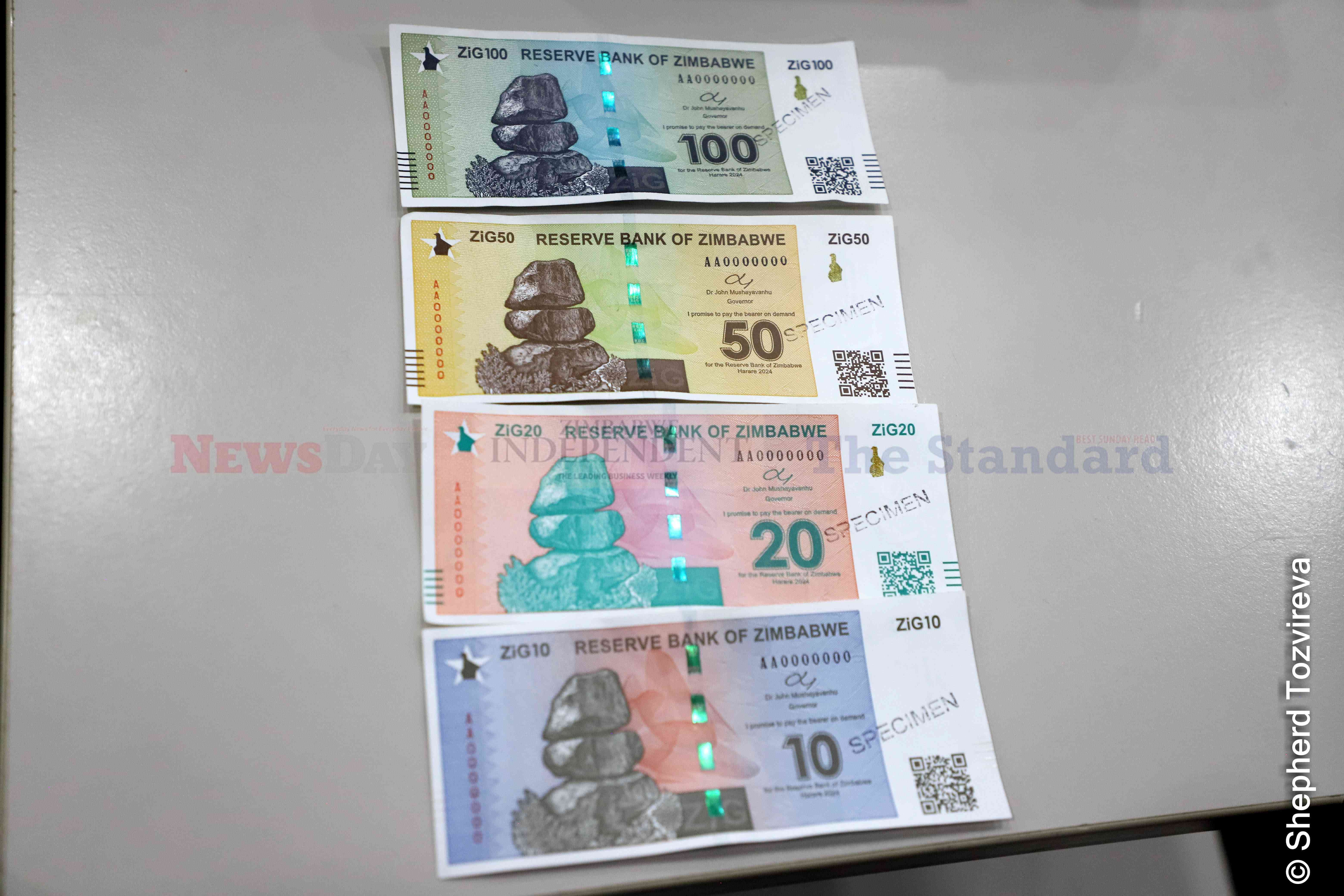
Bond notes have reduced the cash shortages gap, but the surrogate currency has chased away the dollar from the system, analysts have observed.
BY NDAMU SANDU

Bond notes were introduced on November 28 2016 under an export incentive scheme guaranteed to the tune of $200 million by the African Export-Import Bank. They were meant to solve the cash availability problems in the country.
In the arrangement, exporters will get an additional 5% bonus as government moves to drive exports and generate the much-needed foreign currency.
Bond notes currently in circulation are worth $102 million in denominations of $2 and $5. The bond family also has the 5c, 10c, 25c, 50c and $1 coins. The bond notes reached 100 days in circulation on March 8.
Confederation of Zimbabwe Retailers (CZR) president Denford Mutashu said the bond notes “filled a critical gap in the financial services sector as the notes improved the ability for banks to meet customer cash withdrawal demands”.
“The retail sector benefitted from improved liquidity as demand has been subdued for a long time during the deflationary pressures in the economy,” he said.
- Chamisa under fire over US$120K donation
- Mavhunga puts DeMbare into Chibuku quarterfinals
- Pension funds bet on Cabora Bassa oilfields
- Councils defy govt fire tender directive
Keep Reading
“There has been a rise in demand for locally- manufactured goods especially.
“Other retailers have posted very attractive 2016 end of year results and that’s a clear testimony that bond notes have been a huge success,” Mutashu said, adding that such success could not be celebrated without noting improvement in capacity utilisation in the local industry.
He said the bond notes had stabilised the economy as they could not be externalised.
Mutashu applauded the RBZ for introducing ing the bond notes into the market in accordance to how much would have been exported.
He said there were however, other fundamentals that required attention, like the current hard currency shortages that had seen some manufacturers failing to meet external suppliers’ payments obligations on time due to the depleted nostros.
The CZR boss said the shortage of foreign exchange had resulted in a three tier pricing system in the retail sector.
“There is also need to create a revolving fund for the retail sector, especially small to medium that have done exceptionally well to support the economy,” Mutashu said.
“The fund will go towards stocks procurement and promote the ‘buy local’ concept only.”
Bond notes are credited for improving the ease of transactions, according to Sifelani Jabangwe, Confederation of Zimbabwe Industries vice president.
“Before the introduction of bond notes, our customers were having challenges on how to transact. In terms of improving the ease of transactions, there has been a positive impact,” Jabangwe said.
The bond notes have spawned in a three-tier pricing system in the market. Jabangwe said different prices were only prevailing before the introduction of the bond notes in which there was a premium on cash when using the real time gross settlement system.
In the outlook, Jabangwe said there was need to drive exports and cut down on imports and in the process reducing the trade deficit.
Economist Godfrey Kanyenze told Standardbusiness that bond notes had succeeded as there was “no alternative currency which is available”.
However, Kanyenze said the notes were not adequate to plug the cash shortages plaguing the market.
In his January monetary policy statement, RBZ governor John Mangudya said cash at banks was $120 million and the nostro balances were $250 million.
Kanyenze said with over $6 billion in bank deposits, it was clear the bond notes would not plug the hole.
Have bond notes succeeded as a medium of exchange?
Economist Daniel Ndlela said bond notes were the “only medium of exchange that is available and it cannot be used outside the country”.
“The new currency has succeeded in chasing out good money,” Ndlela said.
Mangudya estimated $600 million to be circulating in the economy by January this year.
Mangudya said the main reason behind the substantial amount of cash circulating in the economy included the treatment of foreign currency as a store of value, low business sentiment or confidence within the economy, high informalisation and financial exclusion.
Kanyenze said the nostro balances of $250 million were too low to meet the import obligations, resulting in companies failing to timeously pay for external obligations. In 2016, imports were $5,3 billion.
“Balances in the nostros are not sufficient to meet external obligations. This means we are going to have the liquidity crunch for a long time. Bond notes will not address the crisis,” he said.
An executive with a leading commercial bank said last week that the bond notes were a “fire-fighting short term measure disguised as an incentive”.
“Monetary policy will not steer the economy out of depression. Monetary policy is effective in an overheating economy,” he said.
In his monetary policy statement, Mangudya ordered banks to “strictly observe the policy to deposit bond notes into the US$ accounts without requesting the banking public to differentiate between bond notes and US$ cash.”
“This measure is essential to ensure that bond notes continue to trade at par with the US$ and to reflect the fact that bond notes are supported by the $200 million offshore facility to support the demand for foreign exchange attributable to bond notes,” he said.
Ndlela, however, said it was a myth that bond notes were at par with the dollar as from day one there was an exchange rate of 5% created by the RBZ incentives.










